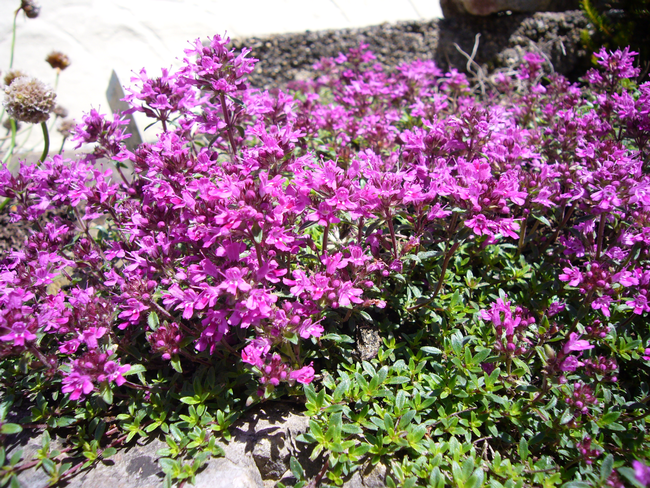by Melody Kendall
Ongoing drought in California and world-wide climate change makes water conservation a very important topic. One of the ways to conserve water in your landscape is to reduce or remove your thirsty lawn and replace it with a more water friendly option. The perks of removing your turf grass are numerous, though many homeowners still seek low-growing, grass-like plants to create the appearance of a lawn. There are multiple plant options; we will look at a few groundcovers, California native grasses, low-water landscape plants, xeriscape and succulents/cactus.

California Native Grasses: California native grasses offer many beautiful perennial plants to add color, texture and movement in your garden each season with very little upkeep required. Being well-adapted to California regional growing conditions, many are able to survive drought conditions, heat, heavy rains or freezing weather. These native grasses also provide cover, food and nesting materials and sites for birds, pollinators and wildlife. There are even evergreen options that will provide color during the dreary winter months and come in tall, short and round varieties.

Xeriscape; Succulent and Cactus: Xeriscaping is a garden design concept specifically tailored to areas prone to drought and/or where water conservation practices are in effect. The plants in this type of garden are selected specifically for their ability to thrive in landscapes using a minimal amount of water. Plants do not need to be specifically succulents and cactus though often their particular growth requirements do well in a xeriscape garden. Look for low-water and drought tolerant plants. California native plants are a good fit because of their adaptation to our local climate. Plants suited to xeriscape landscaping are sometimes referred to as ‘xeric' plants. Drought tolerant is a relative term as a plant considered drought tolerant in the northwestern US might cook in the desert country.
When laying out your xeriscape garden design, clump plants with similar growth requirements together. Placing thirstier plants together in one group and low-water plants together in a different grouping will reduce the possibility of wasting water and/or overwatering. Make sure you have well-draining soil as drought tolerant plants do not do well in wet soggy soil. Check your chosen plants' needs and mulch accordingly to hold the right amount of moisture. Though some xeriscape-friendly plants may prefer poor, dry and rocky soil, always check your selected plants' growing needs.
Options for lawn replacement are limited only by your imagination. The desired finished look, upkeep required and water availability are just a few considerations to keep in mind. Information that has been provided will give you ideas and the impetus to remove your turf grass. Do research on your project and make a plan to have a successful project.
Napa Master Gardeners are available to answer garden questions by email: mastergardeners@countyofnapa.org. or phone at 707-253-4143. Volunteers will get back to you after they research answers to your questions.
Visit our website: napamg.ucanr.edu to find answers to all of your horticultural questions.
Photo credits:
https://commons.wikimedia.org/wiki/File:Creeping_red_thyme.jpg
https://commons.wikimedia.org/wiki/File:Xeriscape_garden_%282014%29_-_2.JPG
Information links:
UC Master Gardeners of Marin-groundcovers https://plantmaster.com/presents/plants.php?id=5fb049f7649b6
Calscape list of Ca. Native grasses: https://calscape.org/loc-California/cat-Grasses/ord-popular
UC Master Gardeners of Napa County: Las Flores Learning Garden http://napamg.ucanr.edu/demogarden/g2/
Ca gov-Xeriscaping https://calrecycle.ca.gov/organics/xeriscaping/